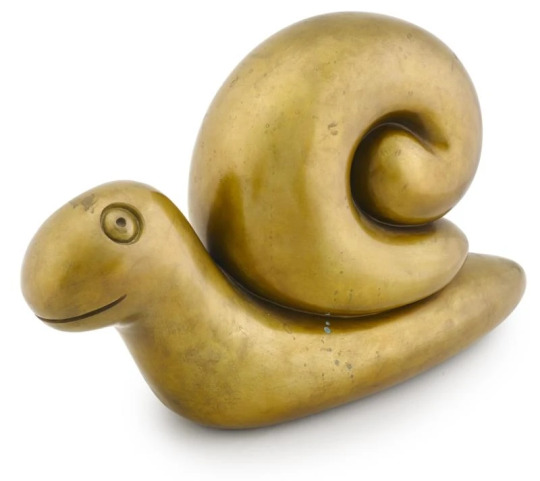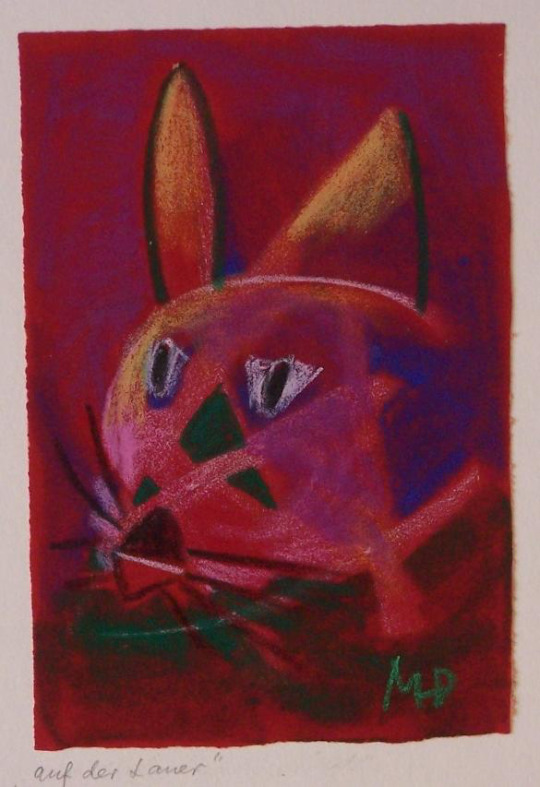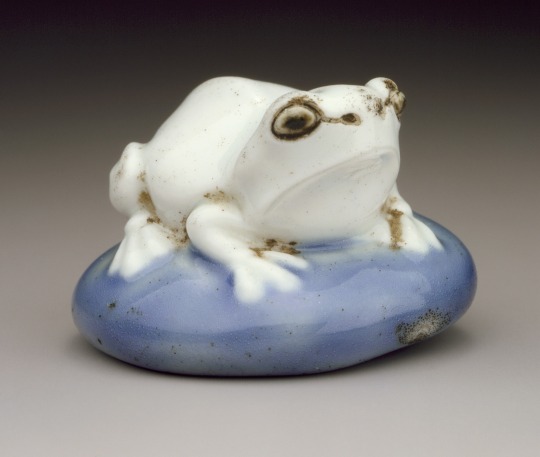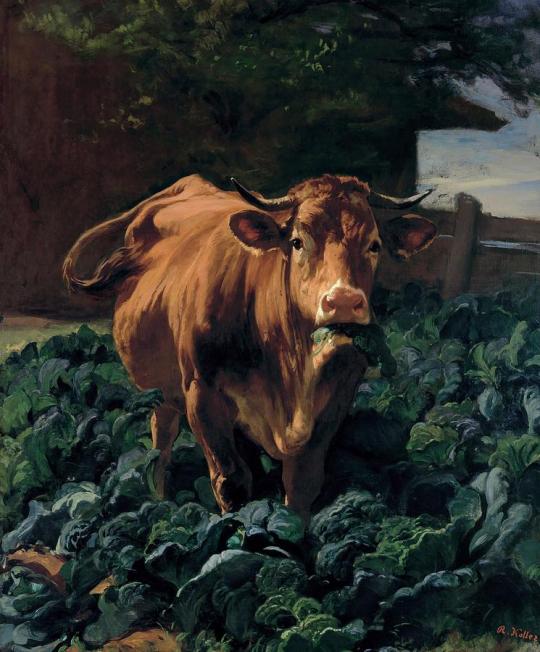Text
#MonotremeMonday :

Kordelia Zansui Chi (Australian, b. 1967)
Echidna, 1996
hand-colored linocut, 15 x 15 cm
#animals in art#20th century art#linocut#echidna#monotreme#Monotreme Monday#Australian art#Australian animals#Kordelia Zansui Chi#1990s
19 notes
·
View notes
Text
Something cute and fun for #MonotremeMonday featuring my favorite animal on the planet:

Chris Orr (English, b. 1943)
Platypus on Holiday, 1967
Watercolor on paper, 10 x 15 cm (3¾ x 5¾ in.)
#animals in art#european art#20th century art#watercolor#painting#Chris Orr#illustration#platypus#monotremes#Australian animals#1960s#Monotreme Monday#modern art
7 notes
·
View notes
Text
#MonochromeMonday :

Billy Missi (Torres Strait Islander, 1970-2012)
Seahorses & Squid, 1999
stone lithograph, 32 x 22 cm
#animals in art#20th century art#lithograph#print#squid#seahorse#sea life#Torres Strait Islander art#Indigenous art#Australian art#modern art#Billy Missi#monochrome#black and white#Monochrome Monday#1990s
23 notes
·
View notes
Text

Walter Whall Battiss (South African, 1906-1982)
Guinea Fowl, n.d.
oil on board, 21 x 29.2cm (8 1/4 x 11 1/2 in)
#animals in art#20th century art#bird#birds#birds in art#Guinea fowl#Walter Whall Battiss#South African art#modern art#trio#painting#oil paniting
9 notes
·
View notes
Text
For #NationalTeaDay 🫖☕️:


Teapot with Fossil Decoration
British, Staffordshire, c. 1760–65
Salt-glazed stoneware with enamel decoration
4 1/4 × 7 1/4 in. (10.8 × 18.4 cm)
The Metropolitan Museum of Art, New York 37.22.6a,b
“Though it's got a surprisingly modern look, this teapot was made in the 18th-century in Staffordshire—the heart of Britain's pottery industry. The area’s limestone yielded prehistoric fossils, and potters often turned them into whimsical motifs for teapots.”
#animals in art#european art#British art#decorative arts#ceramics#Staffordshire#pottery#teapot#National Tea Day#tea kettle#monochrome#black and white#fossil#fossils
56 notes
·
View notes
Text
Reposting for #NationalTeaDay 🫖
#FrogFriday:


Teapot with Raised Frog Design
Japan, c.1900
Bank Ware (stoneware & overglaze enamels), 11.5 x 16 cm
Art Gallery of Greater Victoria 2004.013.032 a,b
125 notes
·
View notes
Text

Maria Primachenko (Ukrainian, 1908-1997)
Menagerie, 1977
gouache, fluorescent paint, paper, 61.9 x 88.5 cm
#animals in art#20th century art#european art#Maria Primachenko#folk art#Ukrainian art#painting#1970s
81 notes
·
View notes
Text

Katherine Bernhardt (American, b.1975)
Giant Tarantula, 2003
acrylic & oil on canvas, 40.7 by 30.2 cm (16 by 11⅞ in.)
#animals in art#contemporary art#spider#tarantula#painting#oil painting#Katherine Bernhardt#American art
4 notes
·
View notes
Text

Tom Otterness (American, b. 1952)
Snail, 2004
bronze with gold patina
10 ½ x 5 5/8 x 17 in
11 notes
·
View notes
Text
For #Caturday :

Ludwig ten Hompel (German, 1887-1932)
Cat, 1912
oil on canvas, 59 x 72 cm
#animals in art#european art#20th century art#German art#modern art#painting#oil painting#Ludwig ten Hompel#Caturday#1910s
21 notes
·
View notes
Text
For #Caturday :


Margret Hofheinz-Döring (German, 1910-1994)
1. Katze putzt sich, 1959
oil paint & pen, 23x43cm
2. Katze - Auf der Lauer, 1969
pastel, 17x25cm
#animals in art#european art#20th century art#cat#cats#cats in art#women artists#Margret Hofheinz-Döring#painting#drawing#Caturday#German art#1950s#1960s#modern art#german expressionism#expressionism
9 notes
·
View notes
Text
For #Caturday :

Kitten Appliqué Quilt
Possibly Kentucky, USA, 1941-50
Cotton, including muslin feed sacks, with cotton embroidery; 83 × 67"
American Folk Art Museum 1987.8.1
#animals in art#20th century art#1940s#cat#cats#cats in art#kitten#kittens#textiles#quilt#folk art#American art#American Folk Art Museum#Caturday
28 notes
·
View notes
Text
#FrogFriday:

Frog on Toadstool
Japan, mid-19th c.
Hirado ware; porcelain with blue & brown glazes
1 9/16 x 1 7/16 x 1 in. (3.9 x 3.7 x 2.6 cm)
LACMA M.87.263.60
#animals in art#19th century art#Hirado ware#porcelain#ceramics#figure#figurine#frog#Frog Friday#Japanese art#East Asian art#Asian art#LACMA
42 notes
·
View notes
Text
#FishFriday:

Plate with Emblematic Pairs of Fish (mahi-ye maratib)
India, Uttar Pradesh, Awadh, Lucknow, c. 1880
Bidri-ware (zarbuland technique)
D: 6 3/4 in. (17.15 cm); H: 1/2 in. (1.27 cm)
LACMA M.2001.100
“The primary decoration on this bidri ware plate is a pair of fish arranged head-to-head with their curved bodies forming a circle. Known as the mahi-ye maratib (Fish of Dignity), it was an insignia of exalted rank that the Mughal emperors and earlier Middle Eastern rulers bestowed upon their subordinate chieftains in recognition of valorous military service. In 1720 it was awarded by the Mughal Emperor Muhammad Shah (r. 1719–48) to Saadat Khan, the Governor of Akbarabad (Agra), who soon became the Governor of Lucknow from 1722 to 1739. The fish emblem subsequently served as the dynastic leitmotif of the Lucknow court and was frequently displayed on its decorative arts and palatial architecture. It was represented in state processions as a fish and two gilt globes carried on a standard. A heraldic form consisting of a pair of honorific mermaids bearing a crown and flanking a shield was used as the personal coat of arms of King Wajid Ali Shah (r. 1847–56). Bidri ware is made from a predominately zinc-based alloy, along with smaller amounts of lead, copper, and/or tin. The ornamentation of bidri ware from the Deccan and eastern India typically features inlaid silver sheet or wire designs, which are rendered flush and burnished. Lucknow bidri ware is distinctive in that it is often executed in bold relief (zarbuland technique), in which the inlaid metals are allowed to remain protruding slightly above the surface and are then adorned with sheet overlay and incised motifs.”
#animals in art#19th century art#metalwork#animal emblems#fish#Fish Friday#Indian art#South Asian art#Asian art#colonial art#Bidri ware#LACMA#plate
6 notes
·
View notes
Text

Rudolf Koller - Cow in a Cabbage Field (1857-1858)
4K notes
·
View notes
Text

Great Ant-Eater by Cuthbert Edmund Swan. From Wild Beasts of the World, Vol. Two. Written by Frank Finn, published in 1909.
Internet Archive
271 notes
·
View notes
Text

Common American Opossum by Louis A. Sargent. From Wild Beasts of the World, Vol. Two. Written by Frank Finn, published in 1909.
Internet Archive
431 notes
·
View notes